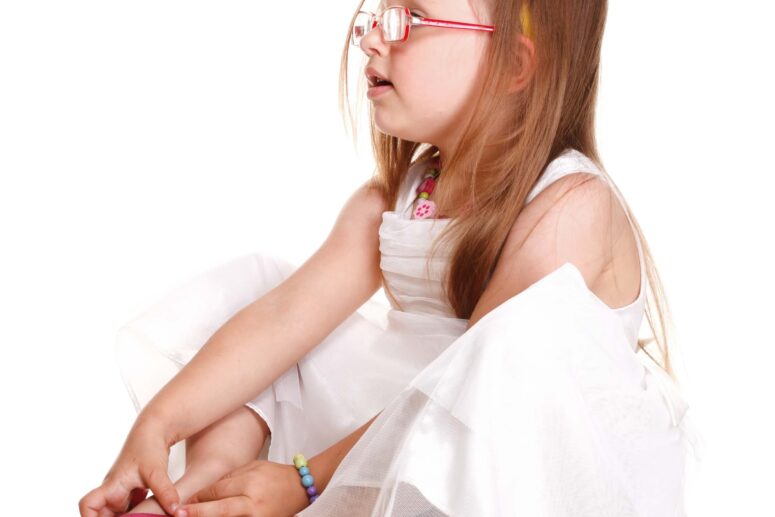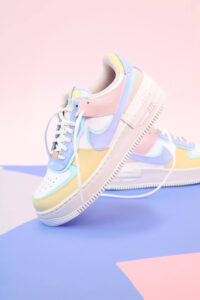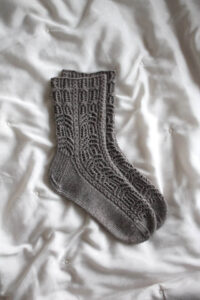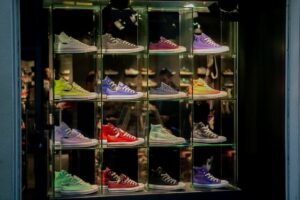
Table of Contents
Many autistic children have difficulties putting their shoes on and keeping them on their feet.
ABA therapy in home can significantly aid in addressing these challenges. But why should something as simple as wearing shoes lead to tears, angry outbursts, and meltdowns?
In this article, we’ll explain why children with autism have a hard time with their shoes and what are the best ways to help them keep their shoes on.
Why Autistic Children Have a Hard Time with Their Shoes
Several factors, such as sensory issues, stress, and foot pain may contribute to your child’s aversion to shoes.
Sensory issues
Sensory processing disorder is one of the main reasons why autistic children dislike wearing shoes. This condition affects the way the brain processes sensory information and may cause hypersensitivity to different elements in the environment, including socks and shoes. Most children with autism have some type of sensory processing disorder.
Stress
Due to delays in fine motor skills, many autistic children find it difficult to tie shoelaces. Putting on their shoes often turns into a stressful situation that may trigger an angry outburst or meltdown.
Foot pain
In addition to sensory issues and stress, your child may also refuse to wear shoes due to foot pain. The pain can result from injury, a medical condition, or the use of an ankle-foot orthosis that limits foot movement.
Don’t worry we are not just listing the issues that autistic children have with wearing their shoes. Here are some ways you can help your child with their shoe wearing experience.
How Do You Get an Autistic Child to Keep Their Shoes On?
Know the right measurements
It is essential that your child’s shoes are the correct size. Ill-fitting or tight shoes are not only painful to wear, but they can damage your child’s feet and prevent optimal growth. If your child finds a particular pair of shoes too constricting, opt for wider models or loose-fitting sandals.
Find alternatives to laces
Your child may dislike wearing shoes because tying laces is too challenging. Fortunately, there are several alternatives to laces, such as hook-and-loop fastenings and quick-release or no-tie elastic laces by Lock Laces, Greeper Laces, or Xpand.
Choose sensory-friendly socks
Children who suffer from sensory processing disorder are often sensitive to the seams or fabric of their socks. You can try switching to special sensory-friendly socks that are more comfortable for sensitive feet. Several brands, including Sockabu, CalmCare, EZ Sox, and SmartKnit Kids, carry seamless socks and socks with non-skid bottoms and pull-up loops to make it easier for children to put them on and off. Soft fabrics such as cotton, bamboo, or silk usually work best for autistic children with sensory issues.
Check whether your child needs orthotics
If your child suffers from foot pain or has walking difficulties, a podiatrist can assess whether they need additional support for their feet. Some children with autism have to use special shoe inserts called orthotics or foot orthoses to improve their foot posture. In this case, they will also need to wear suitable orthopedic shoes.
Buy adaptive shoes
Adaptive shoes are designed for children and adults with special needs. Besides being very comfortable, they come with pull tabs and adjustable straps which make them easier to put on and take off than regular shoes. In addition, most adaptive shoes are orthotics-friendly.
Now that we’ve seen what you should keep in mind when choosing shoes, here are some tips on how to make the shoe shopping experience more pleasant for your child.
Going to a Shoe Store with Your Autistic Child
Autistic children with sensory sensitivities often find busy and bright stores overwhelming. That’s why shopping for shoes can be extremely stressful and trigger anxiety and disruptive behaviors. However, if you are well prepared, you will be able to create a more pleasant shoe shopping experience for your child.
Measure your child’s feet
If you know that going to a store will be challenging, measure your child’s feet at home. You can use a special measuring device such as RITZ Stick or Brannock, for example. Alternatively, make a simple insole by drawing around your child’s foot on a piece of cardboard and cutting out the shape. This will make your trip more efficient and your child will avoid the stress of having their feet touched while at the store.
Buy several pairs of shoes
If your child finds it hard to focus while you’re in the store, you can purchase more than one pair of shoes and have your child try them on at home. Keep the ones your child finds the most comfortable and return the rest. Just make sure to check the store’s return policy before you buy.
Bring a soothing item for your child
Don’t forget to bring your child’s favorite sensory item, such as a fidget toy or blanket. It will help soothe your child if shoe shopping gets too overwhelming.
Prepare your child for the trip to the shoe store
Children with autism spectrum disorder can cope better in stressful situations if they are well prepared and know what to expect. Show your child some photos of the store, take a virtual drive using Google Maps, and talk to them about the upcoming trip. You can also create a social story to help your child understand what they’re expected to do, how the trip will unfold, and how long it will last.
Visit during the store’s quiet time
Contact the shoe store in advance to find out what their least busy times are. This way, you will reduce the chances of your child getting overwhelmed and stressed. Some stores even offer “quiet hours” for people with autism, with low activity and no music or bright lights.
Identify your child’s triggers
Try to identify triggers that could provoke your child’s anxiety in a shoe store. This way, you will be able to prepare and minimize their discomfort. For example, if your child is sensitive to loud sounds, you can bring headphones and if bright lights are a problem, your child can wear sunglasses or a baseball hat for protection.
Reward good behavior
Reward your child with a treat or a fun activity for successfully completing the shopping trip. It is essential to provide lots of praise to show that they are doing a good job.
Continue reading to find out what are the best adaptive shoes for children with autism.
The Best Adaptive Shoes for Autistic Children
Keeping Pace Orthopedic Footwear
Keeping Pace shoes are specifically designed to be worn with ankle-foot orthoses. The brand offers a variety of styles and models ranging from toddler size 4 to adult size 10.
BILLY Footwear
BILLY Footwear has many types of stylish adaptive shoes with zippers that allow them to open and fold over completely. The brand focuses on a universal footwear design that is accessible to children and adults of all ability levels.
Tsukihoshi
Tsukihoshi shoes offers flexible and comfortable footwear ideal for children with autism. Most models feature no-tie stretchy laces, in addition to being latex free, washable, and compatible with ankle-foot orthoses.
Pediped
Pediped has a vast selection of sensory-inclusive styles for babies, toddlers, and older children. The shoes are made to encourage natural movement and support healthy foot development. All models feature convenient hook-and-loop closure.
Friendly Shoes
Friendly Shoes come with a patented zipper system, anti-slip custom outsole for increased flexibility and safety, and sensory-friendly memory foam footbeds to reduce pain. Most styles are wide and lightweight, some weighing as little as 5 ounces.
Plae
Plae handcrafted shoes are flexible, machine washable, and come in a variety of fun patterns and colors. They are a perfect option for children who wear ankle-foot orthoses. Once your child has outgrown the shoes, you can resell them through the Plae-Kidizen REWEAR program.
Stride Rite
Stride Rite has a variety of extra wide adaptive shoes with soft memory foam footbeds, flexible soles, and hook-and-loop fasteners. Here you’ll find everything from boots to school shoes, sandals, water shoes, and light-up sneakers for children with foot issues.
Steve Madden Adaptive Shoes
Steve Madden offers a small selection of adaptive shoes for children. Features include dual zippers with long pull tabs, elastic laces, and removable socks for extra space.
Nike FlyEase
The Nike FlyEase sneakers are lace-free adaptive shoes with responsive foam that automatically adapts to the movement. This makes them extremely comfortable and an ideal choice for your child with autism.
Skechers
Many Skechers models feature Velcro straps or a pull-top loop so that your child won’t have any difficulties putting them on and taking them off. The gel-infused memory foam guarantees increased comfort.
Vans Autism Acceptance collection
Vans autism acceptance shoes are designed for children who have sensory processing issues. Your child can easily slip them on with pull-tabs or close them with hook-and-loop fasteners. As an added bonus, they come in muted colors that will appeal to children with sensory issues.
Conclusion
In conclusion, getting a child with autism to wear shoes can be a challenging task for parents and caregivers. However, by taking a patient and individualized approach, it is possible to help the child overcome their sensory sensitivities and develop the skills necessary to wear shoes comfortably.
Also, getting your child shoes that are designed for children with autism can make them feel more comfortable and willing to wear shoes. It’s important to remember that every child is unique, and what works for one child may not work for another. With persistence and creativity, parents can find the right approach to help their child overcome their shoe aversion and develop the independence they need to thrive.
If you are ready to work with the best ABA therapy provider in New York, New Jersey or Indiana, give us a call at (732) 402-0297. Our dedicated team is ready to help and we will treat you like family.
- Autism Routine Disruption in Adults: Coping Tips - July 16, 2024
- Autism and Obsession: An Overview - July 16, 2024
- Autism and Taking Clothes Off: Management Tips - July 16, 2024



